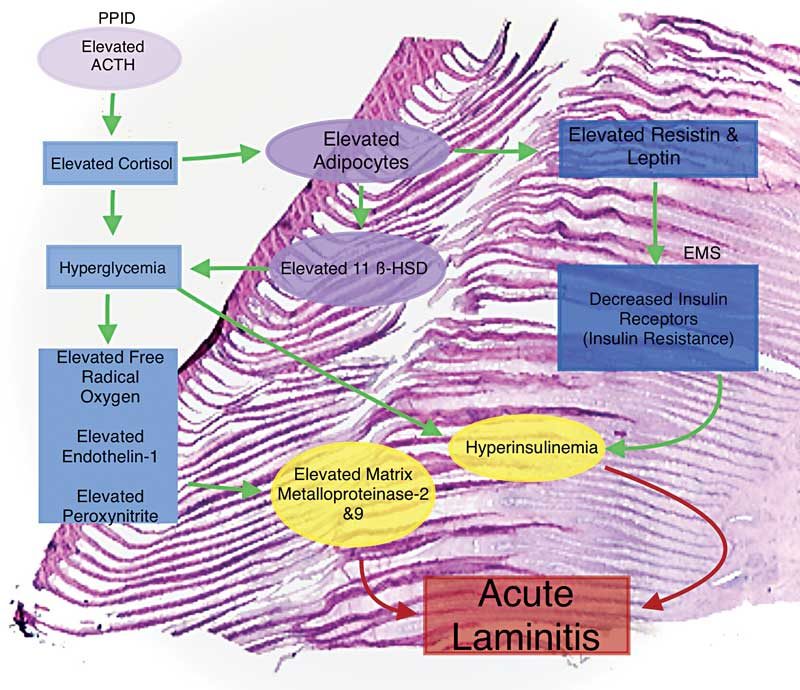American Farriers Journal
American Farriers Journal is the “hands-on” magazine for professional farriers, equine veterinarians and horse care product and service buyers.

The above flow chart illustrates how elevated adrenocorticotropic hormone (ACTH) levels can trigger acute laminitis in horses with pituitary pars
intermedia dysfunction (PPID).
Starting in July, all Adrenocorti-co-tropic Hormone (ACTH) levels rise in horses to prepare their bodies for winter. What is ACTH? It is produced by the pituitary gland. Hormone levels continue to rise into December.
Changes in hormone levels trigger the body to grow the winter coat. ACTH levels are measured in picograms per milliliter (pg/ml). A common upper level for normal horses is 35 pg/ml. Horses with uncontrolled or poorly managed Cushing’s disease, also known as pituitary pars intermedia dysfunction (PPID), can reach 1, 000 pg/ml. Levels can be checked with a simple blood test.
Check levels in the fall for horses with a history of unexplained past bouts with acute laminitis and horses in their teens. These are the years that horses frequently struggle with Cushing’s disease and/or insulin resistance.
ACTH controls the production of cortisol in the adrenal glands. This is where the danger is. Cortisol is a hormone that responds to stress fights infection, regulates blood sugar, maintains blood pressure and regulates metabolism. When there is…